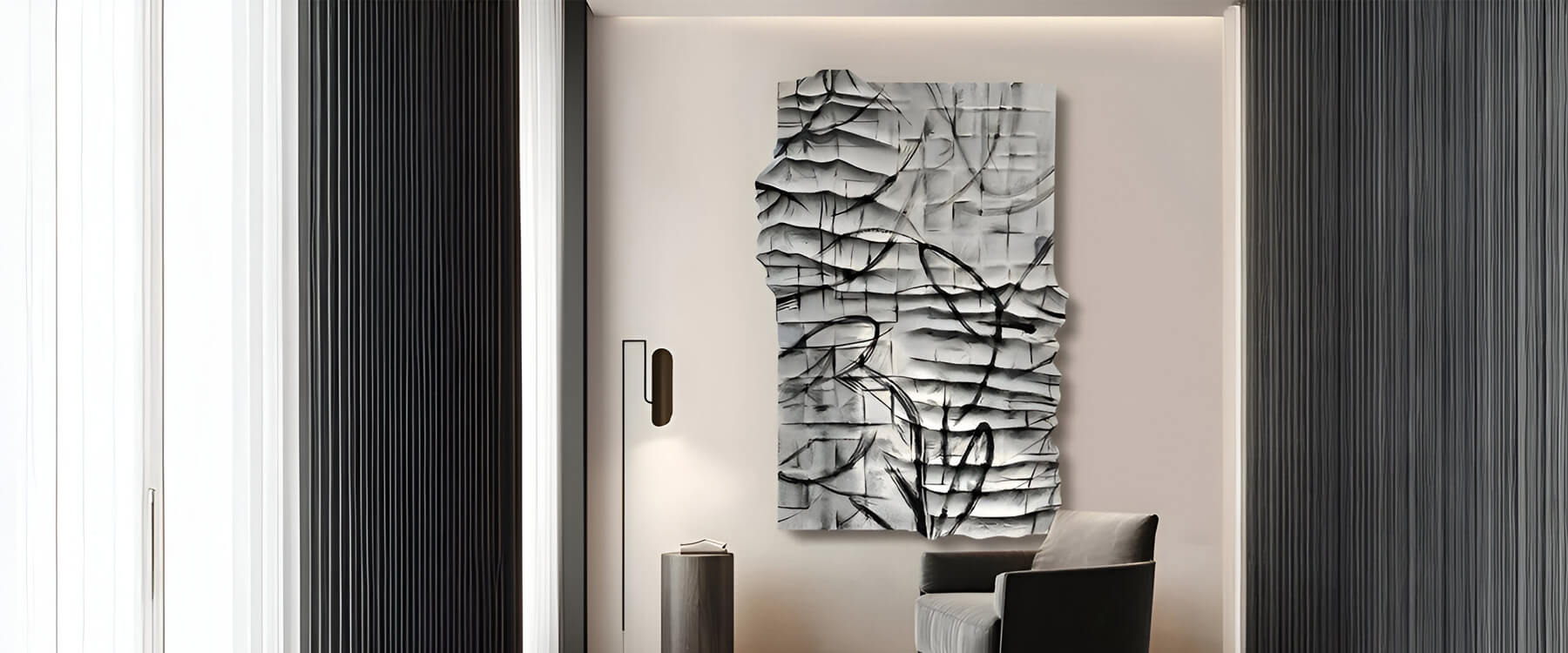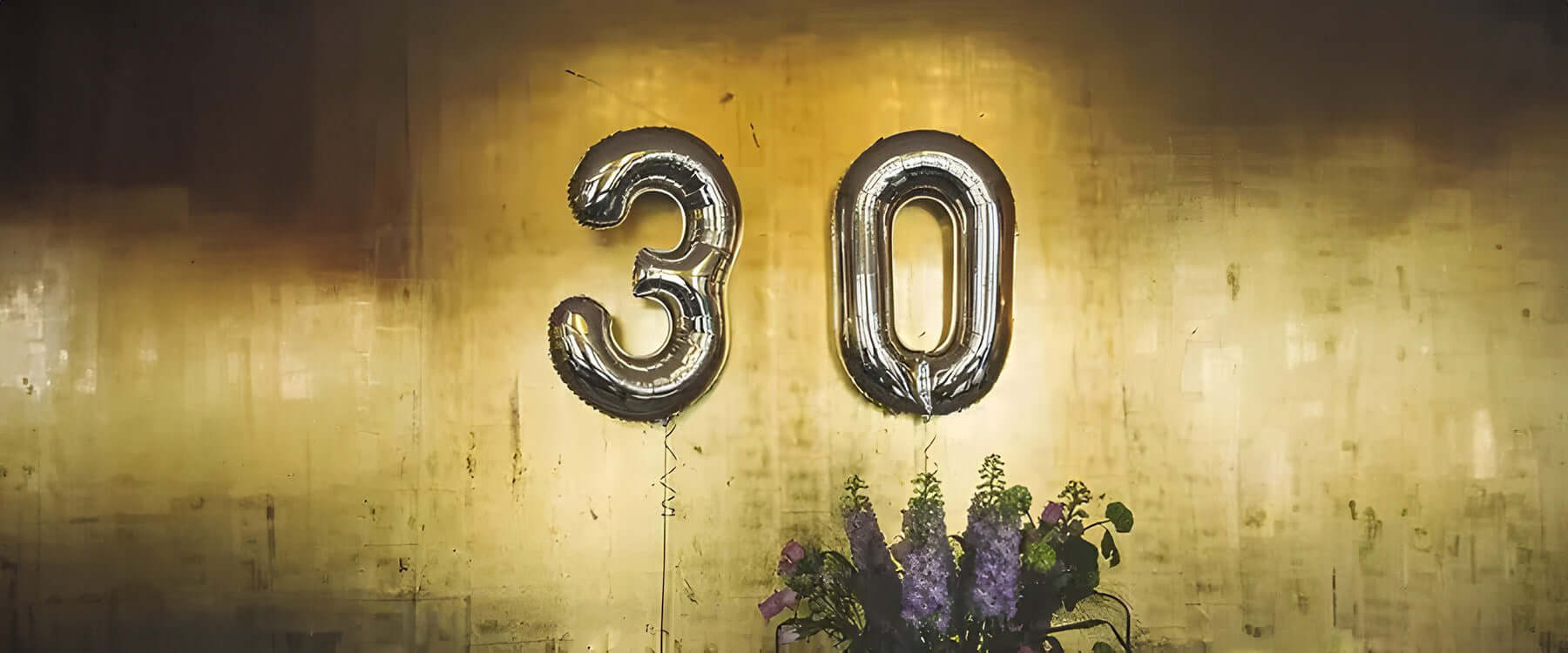The world of abstract art has always been a realm of boundless creativity and innovation. In recent years, a fresh twist has emerged, 3D abstract art, which is rapidly transforming traditional canvas art into dynamic, tactile experiences. This article explores the evolution of this creative art into the third dimension, shedding light on innovative techniques, diverse materials, and creative approaches that add depth and texture to modern works. Whether you’re a collector, an interior designer, or simply an art enthusiast, you’ll discover how 3D art installations can revolutionise your living space, making it more engaging and stylish.
In the following sections, we will delve into what 3D abstract art is, examine its historical context and evolution, highlight ground-breaking techniques and materials, and provide practical tips on selecting, displaying, and integrating these pieces into your home. Expect expert opinions, creative insights, and a guide that brings you closer to the tactile beauty of contemporary abstract expression.
What is 3D Abstract Art and How It Evolved
3D abstract art takes traditional abstract paintings and transforms them by adding physical depth and texture. Unlike flat canvas art, these pieces incorporate sculptural elements, mixed media art techniques, and even digital 3D art methods that produce tangible, dynamic compositions. The shift from a two-dimensional surface to a three-dimensional form invites viewers to experience art in a more interactive and sensory way.
From Flat Canvas to Dynamic Installations
For decades, canvas art has been synonymous with creative abstract expression. However, as creative boundaries expanded, many artists started exploring new dimensions by incorporating reliefs, layering, and multi-dimensional structures. This evolution has transformed static paintings into engaging 3D art installations that offer a fresh visual experience.
Artistic Innovations
Ground-breaking artists have been at the forefront of this transformation. Pioneers in the field have utilised mixed media methods to blend traditional painting techniques with sculptural art pieces. These innovative approaches involve layering various materials to create texture and depth, often using digital tools and 3D printing to push the envelope even further. Such experimentation has not only challenged conventional art forms but also redefined modern art as a whole.
Impact on the Art World
The introduction of 3D elements into abstract art has reshaped market trends and collector preferences. Contemporary art enthusiasts now seek pieces that offer both aesthetic beauty and a tactile experience. This fusion of art forms creates a richer, more immersive visual narrative and has opened new avenues for investment, particularly in premium art prints and unique installations. With art becoming more interactive and visually dynamic, modern art is capturing the attention of interior designers and collectors alike.
Innovative Techniques and Materials
Creative Techniques
The creation of 3D works relies on a blend of traditional craftsmanship and modern technology. Artists employ sculptural techniques such as carving, layering, and mixed media approaches to overcome the limitations of a flat surface. Digital tools and 3D printing further enable experimentation with shapes and forms that were once unimaginable, resulting in dynamic installations that stand out in any modern interior.
Material Selection
The choice of materials plays a critical role in achieving both visual and tactile impact. While traditional mediums like oil and acrylic remain popular, many artists now incorporate unconventional elements such as metal, wood, eco-friendly composites, textiles, resins, and recycled materials. Metal offers a modern look, while wood introduces warmth and natural texture. This varied approach enriches the aesthetic and provides sustainable options for discerning collectors.
Enhancing Dimensionality
Artists are continually exploring ways to enhance the dimensionality of their work. Experimenting with light, shadow, and reflective surfaces accentuates the 3D effect, transforming a static piece into an ever-changing masterpiece. Whether through subtle layering or bold structural elements, these creative approaches ensure that every piece tells a unique story.
The Visual and Tactile Impact
One of the most compelling aspects of 3D abstract art is its ability to capture and hold attention. The added dimensions and textures invite viewers to explore each detail from multiple angles, creating a dynamic visual narrative that becomes the focal point of modern art decor.
A Multi-Sensory Experience:
Beyond its visual allure, the tactile nature of these artworks offers a rich, multi-sensory experience. The textured surfaces and sculptural elements engage viewers on an emotional level, forging a deeper connection with the artwork. This multi-dimensional interaction transforms a space into an immersive environment rather than merely serving as decoration.
Transforming Interiors:
When integrated into your home, abstract paintings can refresh any space. These artworks serve as statement pieces in living rooms, offices, or bedrooms, infusing interiors with energy and sophistication. Paired with complementary decor such as premium art prints or modern abstract accents, they create a cohesive atmosphere that marries aesthetics with functionality.
Expert Insights & Market Trends
Leading figures in the art world are increasingly recognising the transformative power of 3D abstract expressions. Experts praise its capacity to revitalise traditional abstract paintings by adding both visual and tactile dimensions. This trend is evident in galleries and art fairs, where dedicated sections for 3D installations have become more common.
Current Trends:
Collectors and interior designers are shifting their focus toward artworks that break free from the confines of flat canvases. Modern art enthusiasts are drawn to innovative mixed media abstract art that offers a unique blend of visual intrigue and physical presence. The rise of online platforms and social media further supports this shift by giving artists global exposure and driving demand for dynamic installations.
Future Outlook:
Advancements in digital fabrication and sustainable materials promise to improve the quality and appeal of 3D abstract art even further. With an increasing emphasis on customisation and interactive experiences, we can expect even more creative designs that challenge traditional perceptions and enrich living spaces. This evolution not only benefits artists but also positions 3D abstract art as a timeless investment in modern interior decor.
Practical Tips for Selecting, Displaying, and Integrating 3D Abstract Art
Choosing the Right Piece
Selecting the perfect piece involves more than just aesthetic appeal. Start by considering your overall interior style and choose artworks that complement your decor, whether minimalist or eclectic modern art. Size and scale matter: a bold installation may suit a spacious living room, while a smaller, detailed sculpture could enhance a cosy office. Evaluate each piece for both its visual impact and tactile qualities, ensuring it serves as a striking focal point without compromising functionality.
Effective Display Techniques
Lighting and placement are key to showcasing 3D art installations. Natural light can highlight texture and depth, but it should be balanced with accent lighting such as spotlights or LED fixtures to prevent fading and accentuate specific features. Consider placing your artwork on a feature wall for maximum impact or create a gallery wall for a harmonious display when using multiple pieces. For further inspiration, explore our internal articles on modern art and creative 3D techniques.
Seamless Integration
Incorporating 3D abstract art into your interior design can transform your space into a modern masterpiece. Think about how each room might benefit from a distinct artistic touch. A large 3D installation in the living room can tie the decor together, while a carefully selected piece in the office can boost creativity and energy. Pair your artwork with complementary design elements, such as furniture, premium art prints, or subtle modern decor accents, to create a cohesive and inviting environment.
Budget & Investment Considerations
Balancing quality and cost is essential when investing in art. While premium pieces may come with a higher price tag, they offer long-term value as investment items. Research current market trends and consult with experts to ensure your chosen piece fits both your budget and design vision. Whether you’re purchasing your first piece or expanding an existing collection, a strategic investment in modern art can enhance your home’s ambiance and provide lasting aesthetic appeal.
Final Thoughts: Embrace the Future of 3D Abstract Art
In summary, 3D abstract art is revolutionising the way we experience modern art. By moving beyond the traditional flat canvas, these dynamic installations bring a new level of depth and tactile engagement to art decor. From innovative techniques and diverse materials to the transformative impact on home interiors, the world of 3D art offers endless possibilities for creating visually stunning and interactive spaces.
We’ve explored everything from the evolution of creative art to practical tips on selecting, displaying, and integrating these pieces into your home. Whether you’re an avid collector, a budding interior designer, or simply someone who appreciates creative abstract designs, now is the perfect time to embrace the 3D revolution.
Step beyond the canvas and let the dynamic world of 3D abstract art inspire your next home transformation. Embrace this bold trend, and watch as your space comes alive with creativity, texture, and modern sophistication. Discover unique pieces and transformative installations at Giant Sculptures to bring that vision to life.










































































